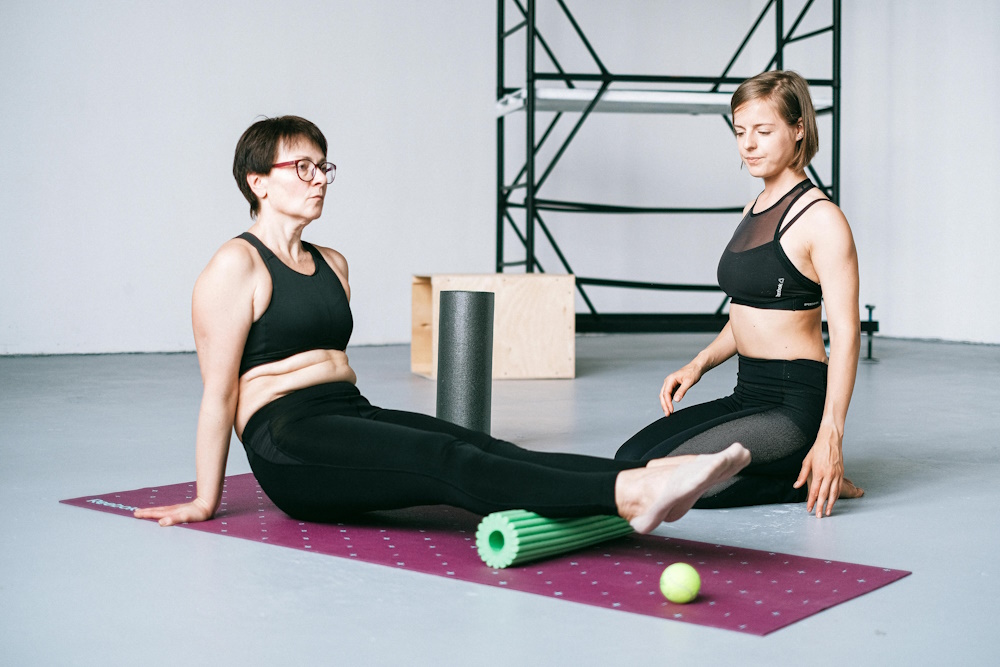Pilates is a versatile and effective exercise method that has gained recognition for its role in rehabilitation. It offers a low-impact, full-body workout that can be adapted to various needs and conditions, making it valuable for individuals seeking to recover from injuries, manage chronic conditions, or improve overall physical health. In this guide, we’ll delve into the world of Pilates for rehabilitation, addressing its effectiveness, its role in the recovery process, the reasons why it’s widely used in rehabilitation clinics, and the suitability of Reformer Pilates for rehabilitation.
Is Pilates Good for Rehabilitation?
Yes, Pilates is an excellent choice for rehabilitation, and its benefits extend to a wide range of conditions and circumstances. Whether you’re recovering from an injury, managing chronic pain, or seeking to improve physical function, Pilates can play a valuable role in the rehabilitation process.
Key factors that make Pilates suitable for rehabilitation include:
· Low Impact: Pilates is gentle on the joints and muscles, reducing the risk of exacerbating existing injuries or causing further damage.
· Whole-Body Approach: Pilates engages the entire body, promoting balanced muscle development and improved posture.
· Customization: Pilates exercises can be adapted to individual needs, making them ideal for tailoring workouts to specific conditions and injuries.
· Core Strength: Pilates focuses on core strength, which forms the foundation for overall physical function and provides support for the spine and other joints.
· Improved Flexibility: Pilates incorporates stretching and flexibility exercises, helping to improve range of motion and prevent stiffness.
· Mind-Body Connection: Pilates encourages mindfulness and body awareness, which can be particularly beneficial in rehabilitation, helping individuals connect with their bodies and understand their physical limitations.
What Pilates Is and Its Role in Rehabilitation
Pilates is a physical fitness method developed by Joseph Pilates in the early 20th century. It focuses on improving core strength, flexibility, posture, and overall body awareness. The exercises are performed with precision, control, and a focus on breath, and they can be adapted to varying levels of difficulty.
In rehabilitation, Pilates serves several critical roles:
· Rebuilding Strength: After an injury or surgery, the muscles often weaken. Pilates can help rebuild muscle strength, especially in the core and stabilizing muscles, which is crucial for supporting injured areas.
· Restoring Range of Motion: Pilates exercises incorporate stretching and flexibility training, which can help restore and improve joint range of motion after injury or surgery.
· Enhancing Posture: Pilates promotes proper body alignment and good posture. This is particularly important during rehabilitation to prevent compensation patterns and further injury.
· Functional Movement: Pilates focuses on functional movements, which are essential for daily activities. This is highly relevant in the rehabilitation process, as individuals work to regain their ability to perform everyday tasks.
Why Pilates Is Used in So Many Rehabilitation Clinics
Pilates is widely used in rehabilitation clinics for several compelling reasons:
· Versatility: Pilates can be tailored to accommodate a wide range of conditions and injuries. From orthopedic injuries to neurological conditions, Pilates exercises can be customized to suit individual needs.
· Low-Impact Nature: Its low-impact, controlled movements make Pilates accessible to individuals with various physical limitations.
· Gradual Progression: Pilates allows for gradual progression in intensity and complexity, making it suitable for individuals at different stages of recovery.
· Mind-Body Connection: Pilates fosters a strong mind-body connection, which can help individuals better understand their bodies, their needs, and any physical limitations.
· Core Strength: The emphasis on core strength in Pilates provides a foundation for overall physical function and can be vital for rehabilitation.
· Complementary to Other Therapies: Pilates can complement other forms of rehabilitation and physical therapy, providing a holistic approach to recovery.
Is Reformer Pilates Good for Rehabilitation?
Reformer Pilates is a specialized form of Pilates that utilizes a machine known as the Reformer. It features a sliding carriage and resistance springs, adding an extra dimension to Pilates workouts.
Reformer Pilates can be particularly beneficial for rehabilitation due to its versatility and ability to provide support, resistance, and feedback during exercises. The Reformer can be customized to accommodate different body types and needs, making it a valuable tool for rehabilitation.
The benefits of Reformer Pilates for rehabilitation include:
· Support and Assistance: The Reformer’s spring-loaded system can provide assistance to individuals with weakened or injured muscles, allowing them to perform exercises more effectively.
· Variability: The Reformer offers a wide range of exercises and positions, enabling tailored workouts that focus on specific areas or movements.
· Increased Resistance: The resistance provided by the Reformer can help individuals build muscle strength and endurance gradually.
· Enhanced Range of Motion: The Reformer can facilitate gentle stretching and improve joint mobility.
In summary, Pilates is a highly effective tool for rehabilitation due to its low-impact, whole-body approach, customizability, focus on core strength, and the mindful mind-body connection it fosters. It can play a vital role in rebuilding strength, restoring range of motion, enhancing posture, and promoting functional movement during the recovery process. The Reformer Pilates machine can be a valuable addition to rehabilitation programs, offering support, variability, increased resistance, and enhanced range of motion for individuals working to regain their physical abilities.
